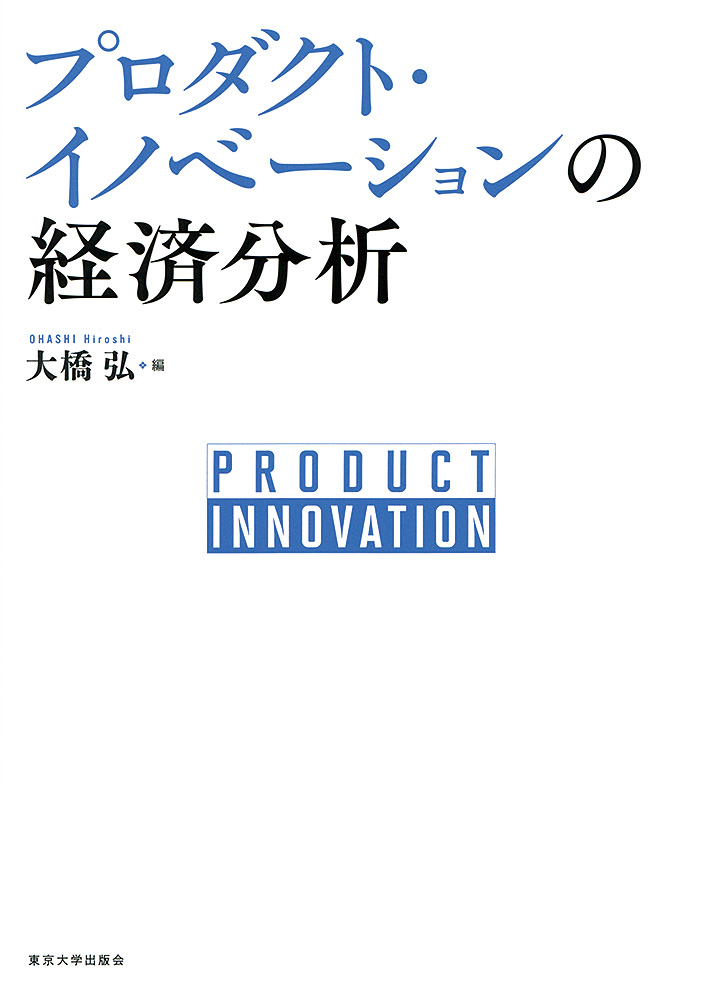
Title
Product Innovation no Keizai Bunseki (Economic Analysis of Product Innovation)
Size
248 pages, A5 format
Language
Japanese
Released
February 19, 2014
ISBN
978-4-13-040261-3
Published by
University of Tokyo Press
Book Info
See Book Availability at Library
Japanese Page
The word ‘’Innovation” is popular in contemporary discourse. Many companies have their own goals of generating innovation, and the governments in the globe have implemented various policy measures to support such activities. Product innovation have caused major changes in our lifestyles, whether we consider those changes to be good or bad. For example, smartphones have now become indispensable to us, and similarly to self-driving cars and the sharing economy.
Most academic studies on innovation have focused on aspects of science and technology (S&T), perhaps because of the belief that developments in S&T drive innovation. However, in reality, innovations that have affected our lives often do not result from progress in S&T. Even the innovative services provided by today’s IT ventures are often created through reconfigurations of existing technologies.
As innovations change the way we live, what added socioeconomic value do they provide? To answe this important social-science question demands an analytical approach that differs from the traditional assessments of S&T. For example, increasing the speed with which automobiles can travel may be considered an important advance from the perspective of technology development. However, in areas with high traffic congestion, a dramatic increase in vehicle speed would not be a meaningful technological improvement for consumers. An assessment of the value of an innovation must take place from a consumer-oriented perspective, and not a technological perspective.
This book uses the state-of-art methodologies and recent research advances in economics to assess innovation from the consumer’s viewpoint. It also provides policy prescriptions based on quantitative evaluation methods, specific case studies, and analyses of the economic impact of innovation. The case studies come from three industrial sectors: natural energy technologies, LCD technologies, and pharmaceuticals.
In addition to taking a micro-approach in examining the case studies, the book offers a bird’s-eye view of the characteristics of innovation by incorporating data from national innovation surveys that can make international comparisons. By combining these micro- and macro-approaches, the text shows the characteristics of innovation, and it presents practical implications and policy prescription.
(Written by OHASHI Hiroshi, Professor, Graduate School of Economics / 2017)



 Find a book
Find a book






